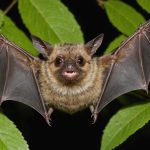Recent identification of new bat species in the UK
Recent discoveries in UK bat species have unveiled new species previously unrecognized within the region. These identifications stem from advances in genetic analysis, acoustic monitoring, and detailed morphological studies. For example, DNA barcoding has been pivotal in confirming subtle genetic differences that distinguish new species from known ones.
One notable aspect of new species identification involves differentiating species with overlapping habitats and similar echolocation calls. Researchers now combine acoustic data with genetic sampling to improve accuracy, ensuring that species are not misclassified. This multi-method approach has led to more precise records of bat diversity in the UK.
Also read : How Do UK Wildlife Conservation Efforts Impact Animal Behavior?
Confirmations come from collaborations among wildlife organizations, academic institutions, and national biodiversity centers. These partnerships facilitate the sharing of data and expertise, fostering a comprehensive understanding of bat populations.
The implications for biodiversity are significant. Identification of new UK bat species highlights the intricacy of local ecosystems and the need to protect varied habitats. Recognizing species diversity aids conservation efforts, as it guides targeted actions to preserve these vital mammals and their ecological roles. This progress underscores the growing importance of continuous monitoring and scientific innovation in wildlife studies.
Also read : How is citizen involvement shaping wildlife conservation in the UK?
Notable behavioral insights from current research
Recent bat behavior research in the UK has shed new light on fascinating aspects of these nocturnal mammals’ lives. One striking discovery involves bats’ feeding patterns—some species demonstrate previously unknown flexibility, adjusting their diet based on seasonal insect availability. This adaptive feeding behavior highlights their resilience in changing environments.
Advanced techniques like tracking devices and acoustic monitoring technologies play a crucial role. These tools help scientists map precise migration routes and identify key roosting sites, providing granular data that was once unattainable. For example, acoustic sensors have revealed complex social calls that coordinate group foraging, suggesting higher cognitive functions than previously assumed.
These behavioral discoveries significantly influence conservation strategies. Understanding migratory corridors allows for targeted habitat protection, while insights into roosting preferences inform building regulations to minimize disturbance. As a result, conservationists can craft more effective plans, aligning with bats’ natural rhythms. This integration of behavior research with practical action underlines the importance of ongoing studies in ensuring the survival of UK bats.
Advances in health and disease research affecting UK bats
Recent bat health research in the UK has significantly advanced our understanding of diseases impacting bat populations and their broader environmental roles. Scientists focus intensely on monitoring pathogens that could affect both bats and humans, emphasizing the importance of disease monitoring for UK bats, particularly concerning bat-borne viruses with potential public health implications.
A notable area of investigation is White-nose Syndrome (WNS), a fungal disease devastating bat colonies elsewhere, though so far absent in the UK. Researchers continue to assess risks and early detection methods to prevent its introduction. Alongside WNS, studies explore other threats such as bacterial infections and the impact of environmental stressors on immune responses.
Collaboration plays a crucial role: academic institutions partner with conservation groups to share data and develop effective surveillance strategies. This synergy improves bat health research, enabling timely responses to emerging diseases while supporting conservation efforts. Such coordinated efforts ensure that both bat populations and public health stand to benefit from cutting-edge research and ongoing disease monitoring initiatives targeting UK bats.
Conservation milestones and population trends
The bat conservation UK efforts have led to notable milestones in recent years, reflecting positive shifts in several species’ fortunes. Certain threatened species, once on the brink, are now experiencing a gradual population recovery thanks to improved protection measures and habitat restoration programs. Legal protections have been strengthened, including safeguarding roosting sites and restricting harmful activities during critical breeding seasons.
Restoration of habitats, such as woodland regeneration and safeguarding of ancient buildings, has created safe environments promoting natural bat behaviors. The return of species like the lesser horseshoe and Nathusius’ pipistrelle bats exemplifies these successes. Conversely, some bat populations remain vulnerable, highlighting the continued need for vigilant conservation strategies.
These trends are significant to UK ecosystems because bats provide essential services such as insect control, pollination, and seed dispersal. Monitoring population dynamics helps identify emerging threats, ensuring timely responses to preserve biodiversity. The intersection of bat conservation UK, habitat efforts, and legal frameworks showcases a comprehensive approach to sustaining these ecologically important mammals.
Ecological contributions and new roles uncovered
Exploring bats’ vital impact on ecosystems
Bats play a crucial role in bat ecology UK, particularly through their exceptional ability in insect control. Recent studies emphasize that bat populations act as natural pest controllers, substantially reducing the numbers of insects harmful to crops. This, in turn, helps mitigate the need for chemical pesticides, leading to healthier ecosystems.
Beyond pest control, bats contribute to a broader spectrum of ecological functions. Experts highlight their importance in maintaining biodiversity by supporting pollination and seed dispersal. While these roles are more prominent in tropical regions, emerging research in the UK context reveals bats also aid in nutrient cycling, enriching soil quality through their guano.
Recognizing these multiple roles enriches the understanding of bat ecology UK, encouraging conservation efforts that protect bats not only as insect predators but as integral ecosystem engineers. This expanded knowledge fosters appreciation of bats’ diverse ecological contributions that sustain environmental balance more comprehensively than previously assumed.




